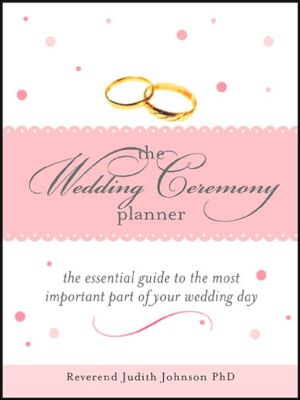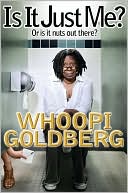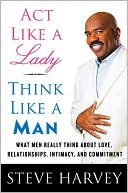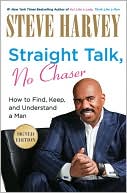The Wedding Ceremony Planner: The Essential Guide to the Most Important Part of Your Wedding Day
Many couples want a spiritual but not a religious ceremony that truly celebrates their unique set of beliefs, values and life circumstances. They want their ceremony, their way but don't know where to begin or what questions they need to ask. The Wedding Ceremony Planner is a comprehensive and user-friendly guide. It covers everything you need to know to create a beautiful ceremony text and to anticipate and address all the profound and mundane logistics with ease, grace and fun. It includes...
Search in google:
Create a personalized ceremony from beginning to end. Library Journal Like Brockway, Johnson is an ecumenical minister with 14 years' experience. Written in a warm, caring tone, her guide is geared to couples wanting a spiritual, heartfelt ceremony-even though they may not be tied to a single religious tradition. As she presents ideas for incorporating personal beliefs and ethnic traditions, she reminds couples of points to consider when designing the ceremony and provides eight sample ceremonies with worksheets to record ceremony cues and sequencing so things run smoothly. Johnson also addresses nonspiritual practical considerations, e.g., chair placements and photography options, that if done poorly can detract from sacred moments. Copyright 2005 Reed Business Information.
How to Design Your Wedding Ceremony\ The wedding ritual is the ceremonial container for the celebration of a couple's love and their decision to journey through their lives together. To assist those of you who are embarking on the adventure of designing your own wedding ceremony, this section of the book contains collections of passages to be used for each of the traditional ceremonial components. You are encouraged to trust your own instincts as you read through the choices, choosing those elements that are right for you. The worksheet entitled "Designing the Ceremony Text" can be a helpful tool in collecting those passages that speak to you as you create a very rough first draft. Using the sample provided on page 23 as a guide, begin with the blank form provided for you on page 291. Just hold up the mirror of yourselves to the passages included here and you will find the ones that ring true for you. Feel free to find sentiments in one section that you would like to use in another, or to change or eliminate words or phrases, or use only a sentence or two from here or there. With the exception of rewriting poetry, give yourself lots of editorial license.\ As with any well-constructed ritual, a wedding ceremony has a certain flow and order to it that leads up to the sacred moment of the exchange of vows and rings and the pronouncement that the bride and groom are now wife and husband. The format that is presented in this section provides a sequencing of components that allows for flow and order, yet customizing of the ceremony to your own taste.\ It's a good idea to start with a rough draft and allow yourselves to explore various ideas without being concerned about what will make it into the final version. Like filling your plates at a smorgasbord, just gather all those items that appeal to you-discernment will follow. This more relaxed approach fosters greater creativity and the opportunity to consider the various components of the ceremony over time. It also allows you to more carefully consider and negotiate your way with passages that one of you likes and the other does not.\ You may feel a bit overwhelmed by the volume of text choices. However, you are likely to find that the process of elimination goes much faster than anticipated and you will be able to come up with a rough draft in several hours. At this point, you may not have chosen readings and, if you are planning to write your own vows, you may want to do so after the first draft is written. Then you can work with the draft, giving careful consideration to the specific wordings, sequencing, and adding or deleting words and sections until it is just what you want. If the officiant is actively working with you on the ceremony text, it is helpful if you set specific deadlines for completing the text well in advance of the ceremony. Of course, there is not always that much time or the luxury of meeting in person, in which case you and the officiant can customize your process to your circumstances. Most of the couples I work with prefer to send email drafts back and forth until the text is complete.\ I always give each couple a copy of their finalized wedding ceremony. This way, when guests want copies of certain passages, the bride and groom can easily provide them. And, many couples like to keep their ceremony among their wedding day keepsakes. On their anniversary, or anytime, some rededicate themselves to their vows, perform the candle ceremony together, or quietly re-read their ceremony together. It is a loving reminder of the foundation they have laid for their marriage.\ Designing the Ceremony Text Worksheet Sample\ 1. Create a rough draft. Use the sample text elements that have been included in this book and any others that you have gathered for inclusion in your ceremony. List all items in the order in which you would like them to occur. If you only want a segment of a sample item or want to change the wording, make note of that here as well. Remember, this is just a rough draft. So, don't be too concerned about editing at this point. Just focus on gathering those elements that speak to you, at least in part. At this stage, you are likely to select more passages than will appear in your final ceremony text.\ Opening Prayer: OP2 Page XX Gathering Words: GW3, lines 1-12 Page XX GW5 Page XX Remembrance/Acknowledgment: RA3, lines 1-3 Page XX Names to be included: maternal grandparents _____ and _____ _____\ Readings and Songs: Selection Author Reader/Singer Declaration of Support: DS3 Page XX Marriage Address: MA2 Page XX Sacred Rituals: WC Page XX Vows: To be written later Ring Exchange:\ Officiant Prelude: PRE8&9 Page XX Couple: RE1 Page XX Final Blessing: FB3 Page XX\ 2. Identify any additional elements you would like to include in your ceremony such as religious or family traditions and note where they will occur:\ 3. Once you have created a rough draft according to your directions above, begin the editing and fine tuning process. Be sure to read the text aloud to be sure that it flows smoothly and isn't too long or short for what you want. Set a specific deadline for completion of the ceremony text well in advance of the ceremony.
Part One: Your Wedding Ceremony: The People, The Place, and Special ConsiderationsChapter 1 Setting the Tone for Your WeddingWhat is a Spiritual Wedding?Your Dream WeddingRemember to Take ChargeChoosing an OfficiantA Personal PerspectiveChapter 2 Deciding Who the Participants Will BeWhat to Consider in Designing the CeremonyThe CoupleThe Guest ListThe Wedding PartyTraditionsChapter 3 Planning the Ceremony LocationFinding Your Wedding Ceremony LocationIdentifying Your Needs and DesiresResearching Possible SitesAgreeing on Terms of Use of Your Chosen SiteOptimizing Your Ceremony’s LocationBalance and FitSpecial Considerations for Outdoor Weddings Easily Accessible and User-FriendlyFactors to Consider in Designing the Ceremony SiteCeremony Site Layout Worksheet--SampleThe Wedding PartyPropsChairsMusicChapter 4 Special Considerations“Handle With Care” RelationshipsWho Does What, When, Where, Why, and HowWedding Day Information Sheet--SampleJust Before the Ceremony Checklist--SampleThe Wedding ProgramThe Wedding RehearsalThe Wedding Rehearsal Checklist--SampleA Note About UshersPart Two: Designing Your CeremonyChapter 5 The Ceremony TextDesigning the Ceremony Worksheet--SampleCeremony OverviewIn the Beginning The Seating of the GuestsThe ProcessionalProcessional Cues and Sequencing Worksheet--SampleOpening PrayerGathering WordsRemembrances and AcknowledgmentsIn the MiddleReadings and SongsCharge for the CoupleThe Declaration ofSupportMarriage AddressSymbolic RitualsCandle CeremonyTree Planting CeremonyWater CeremonyIn the EndWedding VowsRing ExchangePrelude by the OfficiantRing Exchange by the CoupleFinal Blessing and PronouncementBenedictionThe RecessionalRecessional Cues and Sequencing Worksheet--SampleChapter 6 Incorporating Personal Beliefs and CircumstancesFor a Smaller WeddingThe Friendship CircleWhen Your Ceremony Involves ChildrenIncorporating Religious TraditionsJewish Wedding RitualsExplanation of Jewish TraditionsBlessing and Drinking the WineThe Seven BlessingsPrayers from the Old TestamentSymbolic GesturesIncorporating Ethnic TraditionsGreek Crowning Ceremony and Common CupThe Polish Ritual of Symbolic GiftsThe Wrapping of the MantillaPart Three: Putting It All TogetherChapter 7 Sample CeremoniesCeremony One: Spiritual and HeartfeltCeremony Two: Short and SophisticatedCeremony Three: Incorporating Your StoryCeremony Four: Inspired by NatureCeremony Five: Short, Spontaneous, and IntimateCeremony Six: A Marriage with ChildrenCeremony Seven: Nondenominational Christian with Scriptural ReadingsCeremony Eight: Joyful Family TogethernessA Note About Commitment CeremoniesCeremony Nine: A Heartfelt Commitment CeremonyCeremony Ten: Renewal of Marriage VowsChapter 8 Checklists and WorksheetsCeremony Site Layout Worksheet Wedding Day Information SheetJust Before the Ceremony ChecklistWedding Rehearsal ChecklistDesigning the Ceremony Text WorksheetProcessional Cues and Sequencing WorksheetRecessional Cues and Sequencing WorksheetA Note to OfficiantsA Final Thought
\ Library JournalLike Brockway, Johnson is an ecumenical minister with 14 years' experience. Written in a warm, caring tone, her guide is geared to couples wanting a spiritual, heartfelt ceremony-even though they may not be tied to a single religious tradition. As she presents ideas for incorporating personal beliefs and ethnic traditions, she reminds couples of points to consider when designing the ceremony and provides eight sample ceremonies with worksheets to record ceremony cues and sequencing so things run smoothly. Johnson also addresses nonspiritual practical considerations, e.g., chair placements and photography options, that if done poorly can detract from sacred moments. Copyright 2005 Reed Business Information.\ \








